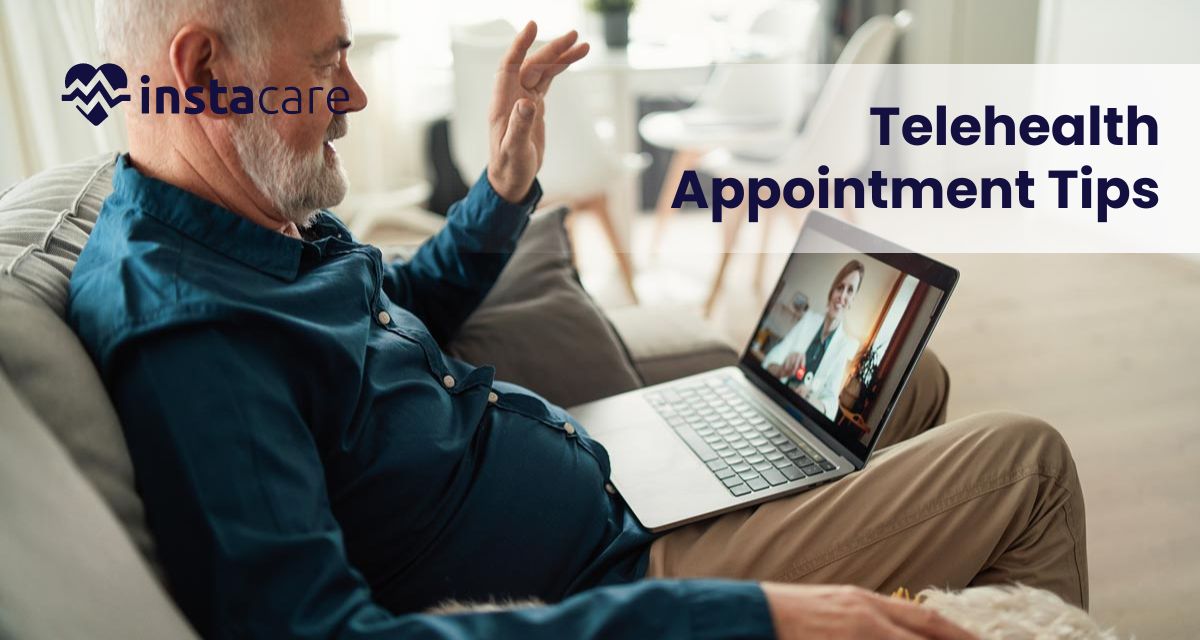Last updated on Monday, 1, July, 2024
Table of Contents
5 Telehealth Appointment Tips: Advice For A Successful Session
Telehealth appointments are becoming more and more common, and for good reason, who wouldn’t want simple access to medical care without ever having to leave their house? No bother, no driving to the doctor’s office. They can be just as successful as an in-person meeting and are very convenient. In addition to the waiting areas, you can combine and avoid your journey to and from the facilities, which is great if you’re pressed for time or find traveling uncomfortable.
But there are some preparations needed in order to have the most successful telehealth session. Being organized will make your appointment go more easily and provide your doctor with the knowledge they need to provide you with the best care possible. These are five suggestions to make sure your telehealth appointment goes well. If you heed these specific suggestions, your telehealth experience will be less stressful and easier, allowing you to concentrate on your health and well-being.
1-Prepare Your Technology Well In Advance
Check Your Internet Connection
A stable internet connection is very essential in a telehealth consultation. Check that you have a stable Wi-Fi or mobile data connection. If possible, use a wired link since it will be more stable.
Test Your Device
Whether you are using a computer, tablet, or smartphone, make sure it is charged and in good working order. Be ahead of time in testing your camera, microphone, and speakers, due to the fact that most telehealth platforms have an option for testing these features.
Update Software
Ensure that the operating system of your device and the telehealth app or platform being used are running the latest version. This would help in avoiding problems that would interfere with or prevent your appointment from happening since compatibility issues might exist.
Have A Backup Plan
No matter how hard efforts are, technology at times does fail. Therefore, always have a backup plan, such as a phone number, through which you can reach out to your health provider if something goes wrong with the video call.
2-Be In A Comfortable, Private Space
Choose A Quiet Space
Go to a quiet, relatively private space where you’re unlikely to be interrupted. This could be another room with the ability for closing a door. Do not use busy areas or rooms with high noise levels.
Check The Lighting
The doctor needs to see you very clearly. If possible, schedule the visit in natural light or in a room that is well lit with no backlighting from windows or bright lights directly behind you.
Set Up Your Space
Set up a space with a comfortable chair, and have a place to put your device on a flat surface. The camera has to be at eye level to ensure good eye contact during the call. You may want to use a stand or prop up the device to get the right angle if needed.
Reduce Background Noise
Try to minimize the background noise by turning off the television, radios, or any other noisy appliances. Give all family members notice that you will be engaged in a telehealth session and thus may have less time and need for quietness and privacy.
3-Prepare Your Medical Information
Gather Documents
Keep beside you your medical history, the list of medications taken at the moment, and the documents or test results having to do with your health problem. This allows you to give correct information to the healthcare provider.
Make A List Of Symptoms And Questions
Write down the symptoms you have been experiencing, when they started, their severity, and any sort of triggering observations. Have a list of questions or anxieties that you want to discuss during the appointment.
Know Your Health Insurance Information
Take along your insurance card or details for identification or billing purposes.
Take Notes
During the visit, write down the advice, diagnoses, and treatment plans your provider is giving. Not only will this help with recall, but it will also help you complete important next steps.
4-Be On Time And Ready
Log In Early
Attempt to log in to your telehealth platform about 10-15 minutes before your scheduled appointment time. Having that advantage allows for time to iron out any last-minute technical issues.
Keep Everything That You May Need Near You
A pen, paper, your ID, an insurance card, and all documents relevant for the appointment. If you have symptoms that are manifested physically, like a rash or swelling, it’s important that your device can easily be positioned to capture whatever might happen.
Dress Appropriately
Comfortable but respectable, something you would go to an in-office visit in. This is professional courtesy, showing respect, and also helps to create makeshift professionalism in what can be a very casual medium.
Be Ready To Communicate
Be prepared to talk clearly and directly. This should be remembered that your doctor cannot conduct a physical examination; thus, description of symptoms and concerns needs to be detailed and precise.
5-Follow Up After The Appointment
Review Your Notes
Go through the visit notes. Be sure to understand what you will do next, schedule a follow-up appointment, fill a prescription, or begin a new treatment plan.
Schedule Follow-Up Appointments
Do this right away if your Healthcare provider recommended that you come back for another visit. This provides continuity in the care of your health and keeps you on track.
Fill Prescriptions Fast
If you have been prescribed medication, don’t wait to fill it. Many pharmacies offer delivery services for prescriptions, so you won’t even have to leave home if that is not possible.
Questions To Ask After The Visit
If some other questions come to your mind after the appointment, please do not hesitate to call back to talk to your health care provider. Most telehealth platforms have secure messaging services where you can message follow-up questions.
Conclusion
Telehealth appointments, no doubt, are excellent means of receiving medical care from the comfort of your home. The challenge now is how a patient can get through the process to have stress-free, productive telehealth interactions? That includes being prepared with technology, setting up an appropriate environment in advance, preparing one’s medical information, punctuality, and communication following an appointment. These easy steps will go a long way in making your telehealth experience equally good as an in-person visit, thus able to manage health conveniently and efficiently.
FAQs
What are the devices used in running or conducting a telehealth appointment?
An internet-enabled device, such as a computer, a tablet, or even a smartphone, will be needed for a telehealth appointment. You should make sure that the device you use has a camera, microphone, and speakers. Stable internet connectivity is recommended to avoid hanging or disruption during your session. Some telehealth platforms will require you to download specific software or apps. This may be important to check in advance that everything is put in place.
How do I know if my telehealth visit is private and secure?
For both privacy and safety, have your telehealth appointment in a quiet, most private area where you will not be overstayed. Always use a secure internet, the best would be from a private Wi-Fi rather than from public Wi-Fi. Ensure the telehealth platform that is going to be used is well known and abides by all privacy laws. Your care provider shall equally ensure that your information is well protected.
Might I get a prescription through a telehealth appointment?
Yes, you can get prescriptions via a telehealth appointment. Your doctor is able to submit prescriptions to your pharmacy electronically. If you have a prescription refill, you will be able to discuss that with your provider at the appointment. Be prepared to have your pharmacy’s contact information on hand in case your provider needs it. Some medications, however, may first require an in-person visit, so always good to check with your provider beforehand.



